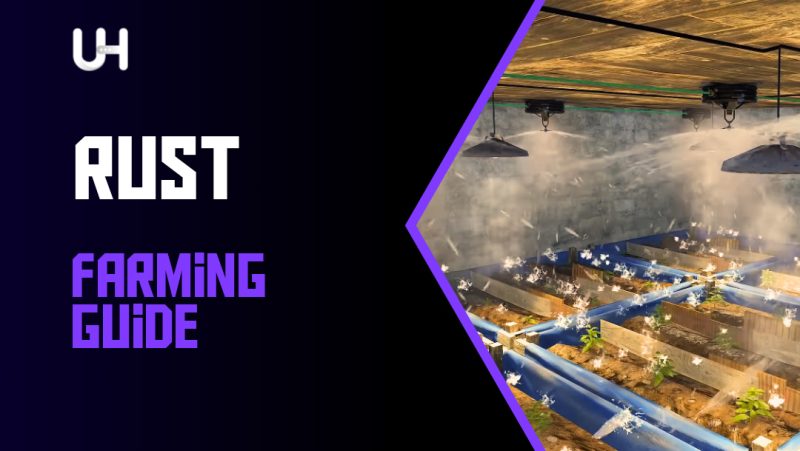Raise your farming skills and secure a stable source of valuable resources in the popular multiplayer survival game, Rust. Whether playing solo or teaming up with friends, learning the ins and outs of agriculture provides numerous benefits, ranging from consistent supplies of food to earning precious scrap currency.
Our comprehensive guide covers essential tips and tricks, enabling beginners to develop a prosperous farm and maximize returns on investment. Discover secrets behind choosing ideal seeds, maintaining plant conditions, utilizing advanced equipment, exploiting powerful genetics, and profiting handsomely from sales – transforming your gaming experience forever.
Playing RUST Game can be difficult due to its complicated nature. However, once you learn how to farm, you gain a sense of security in uncertain situations. Not only do you have yummy food, but you also get useful materials. Diving deep into farming improves your chances of surviving longer and gives you an edge economically.
Picture yourself surrounded by plentiful food and resources, free from worries about shortages. Plus, observe your modest savings evolve into significant assets, leading to opportunities for expansion, strengthening defenses, or indulging in leisure activities. Start exploring the exciting possibilities of Rust farming right away, merging nutrition and triumph! Join us as we investigate the fascinating details of this critical part of Rust gameplay.
Big fan of survival games? Look into Conan Exiles, loved by tons of players! Get ready for creepy monsters and cool crafting in our helpful guide. Jump into this popular game now!
Get Ready to Plant
There are nine different seeds available for planting:
- berries
- hemp
- potatoes
- pumpkins
- corn
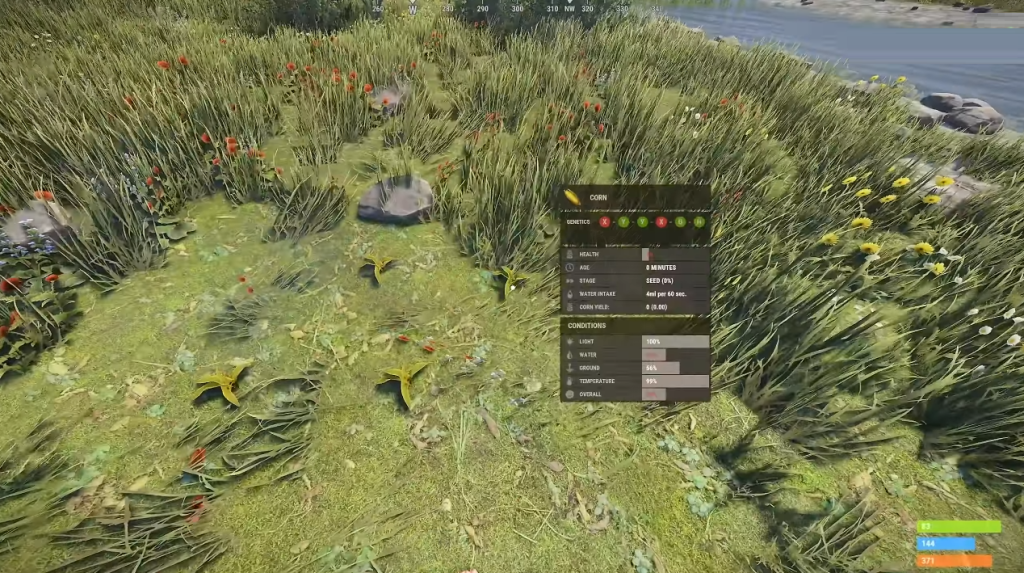
To begin, simply locate the respective plant and pick up the seeds, or consume the food to acquire them. Once you have your seeds, you can plant them directly in the ground without needing any specialized equipment. While outdoor growth is possible, indoor farming offers several advantages, such as faster growth rates and lower risk of spoilage due to environmental factors.
Consider trying Gaming VPS Hosting for a smooth Rust experience. Their high-performance servers ensure smooth gameplay and low latency, allowing you to focus on farming and survival.
Understanding Conditions
Plants have several key statistics and conditions that impact their growth:
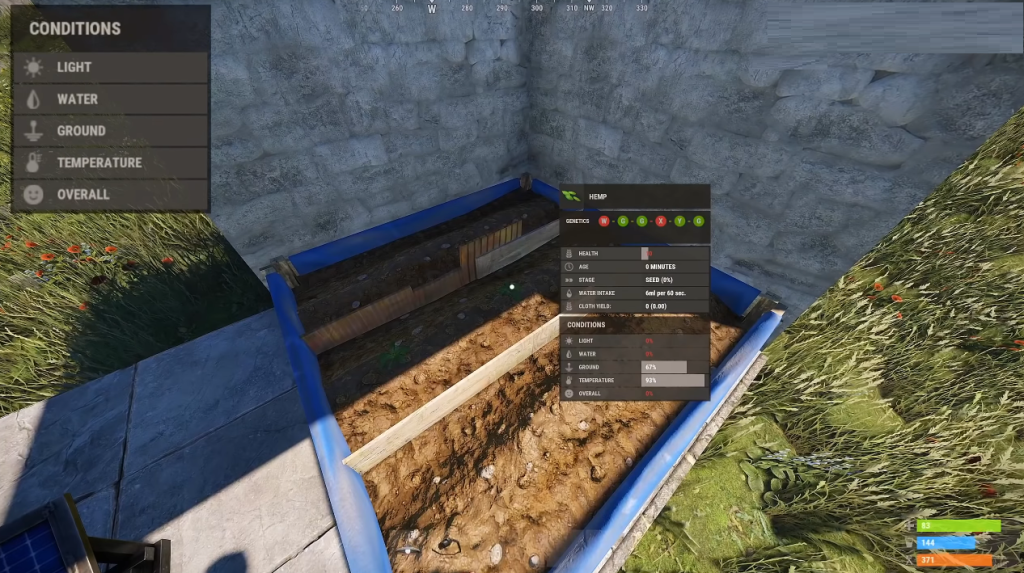
Light Requirement
Plants can receive light from either the sun or artificial lighting, such as a ceiling lamp placed directly above the planter box. Without sufficient light, plants will not grow and eventually die.
Water Condition
Regular watering is crucial for healthy plant growth. Water levels can be monitored and adjusted manually using a bucket or automatically via an irrigation system.
Ground Condition
The starting ground condition is 67%, though this can be improved using fertilizer. Factors such as biome and ground type influence the overall terrain quality.
Temperature
Indoor temperatures can be regulated using electric heaters, while naturally occurring warm environments (such as tropical or desert biomes) offer favorable temperature conditions.
Overall Health
Represents the combined status of light, water, ground, and temperature conditions. Keep in mind that the overall health will mirror the lowest individual condition; thus, all aspects must be optimized to ensure maximum growth potential.
Maximize your Rust experience with Dedicated Game Server Hosting. They deliver unparalleled server stability and support, helping you maintain ideal plant conditions and improve your survivability and economy.
Managing Fluids
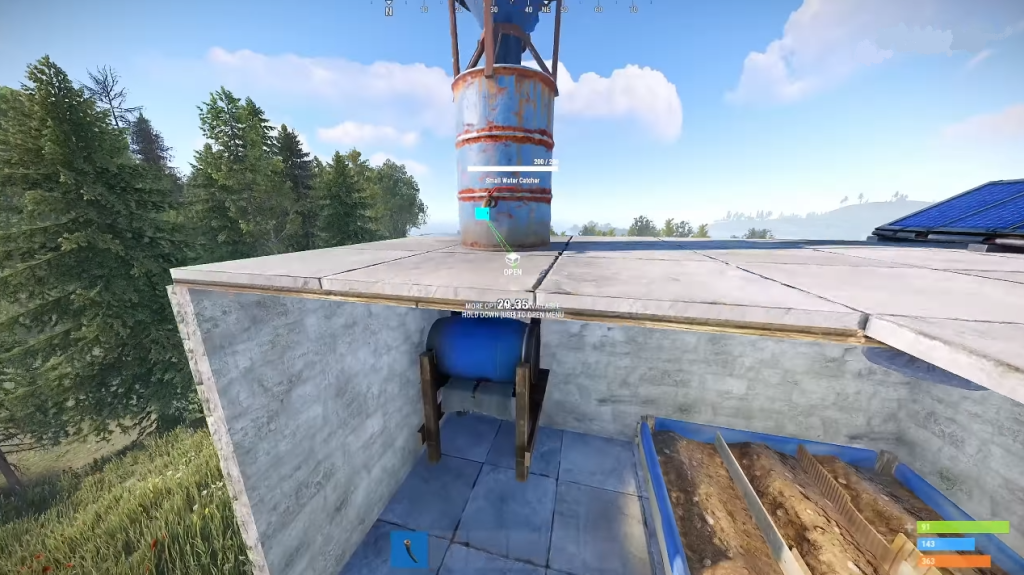
Just like in real life, fluids in the game follow natural laws of physics. Water flows downhill, allowing gravity to transport liquids from higher elevations to lower ones. By positioning water storage containers strategically—for instance, on the rooftop—you can utilize gravity to feed water into equipment, eliminating the need for electrical pumps. Conversely, if your water containers are located on the ground floor, you will require a fluid pump to distribute water efficiently.
Ready to Rule the Rust Universe
Ultahost offers high-performance servers for RUST, Set up your Ultahost’s server hosting now and let the battle commence! Create custom scenarios, invite friends, and conquer territories together. Choose a trusted provider and start dominating today!
Gearing Up with Equipment
Effective farming demands appropriate equipment. Multiple tiers of tools and structures cater to varying stages of development:

Tier 1: Basic Farm
Includes a planter box, bucket, composter, and light source. Total workbench cost: 155 scrap or 195 for the large planter box.
Planter Box
Available in small (holds three seeds) and large (nine seeds) varieties. Place seeds in designated slots for growth.
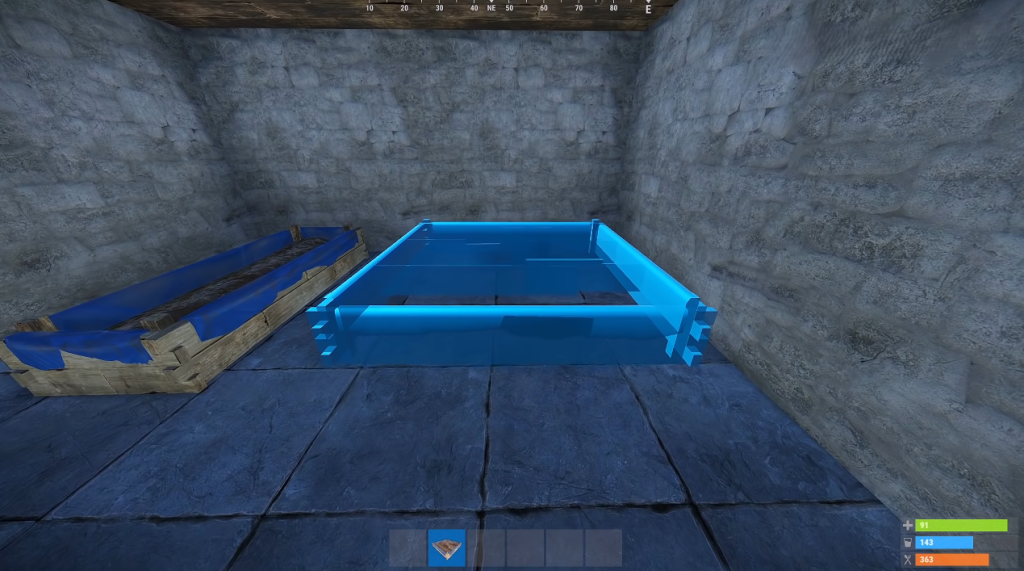
Bucket
Used for collecting fresh water from lakes or rivers for manual watering.
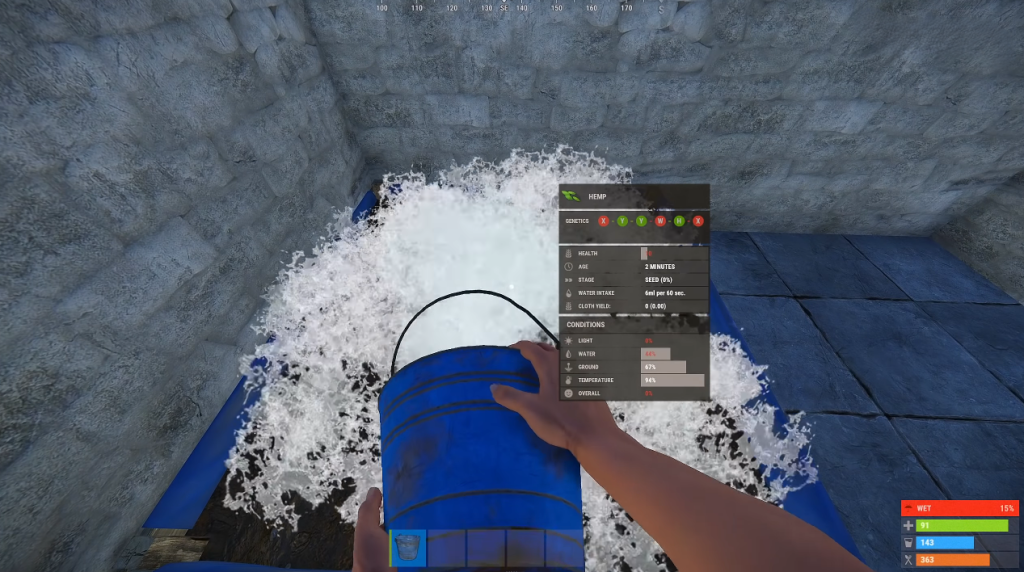
Composter
Creates fertilizer from food items, enhancing ground conditions and promoting optimal plant growth.
Light Source
Either rely on sunlight or employ a ceiling lamp (powered by electricity) to meet light requirements.
Tier 2: Expanded Farm
Introduces a water barrel, small water catcher, hose, fluid pump, and sprinkler system. Workbench cost: 255 scrap.
Water Barrel
Store fresh water collected from lakes, rivers, or rainfall for later use.
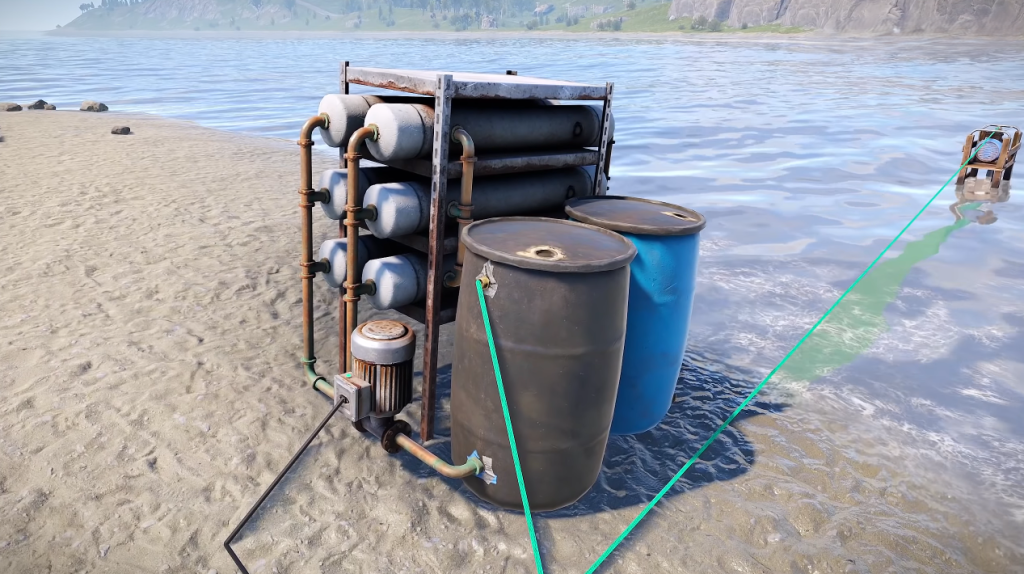
Small Water Catcher
Automatically gathers rainwater for passive water collection.
Hose
Transports water between connected components.
Fluid Pump
Distributes water to sprinklers, ensuring adequate hydration for plants.
Sprinkler System
Waters up to six planter boxes simultaneously, simplifying maintenance and conserving resources.
Tier 3: Advanced Farm
Adds a water pump, potentially powered water purifier, and enhanced versions of existing systems. Workbench cost: 900 scrap.
Water Pump
Extracts water from nearby bodies of water (lakes, rivers, oceans) for direct storage in water barrels.
Powered Water Purifier
Converts seawater into freshwater, expanding accessible water sources for agriculture.
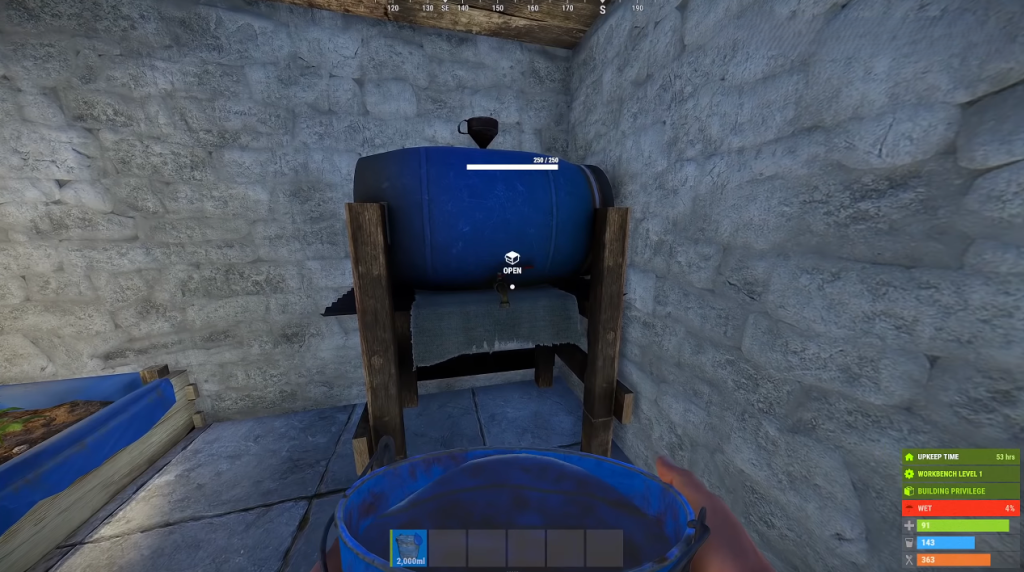
Unlocking Necessary Items
Before embarking on your farming journey, ensure you have unlocked required items via the Level 1 workbench tree path:
Bucket
Facilitates water transportation and collection.
Water Containers
Increase capacity for storing liquids.
Piping
Allows efficient distribution of water throughout your farm.
Solar Panel & Battery
Powers lighting and pump systems.
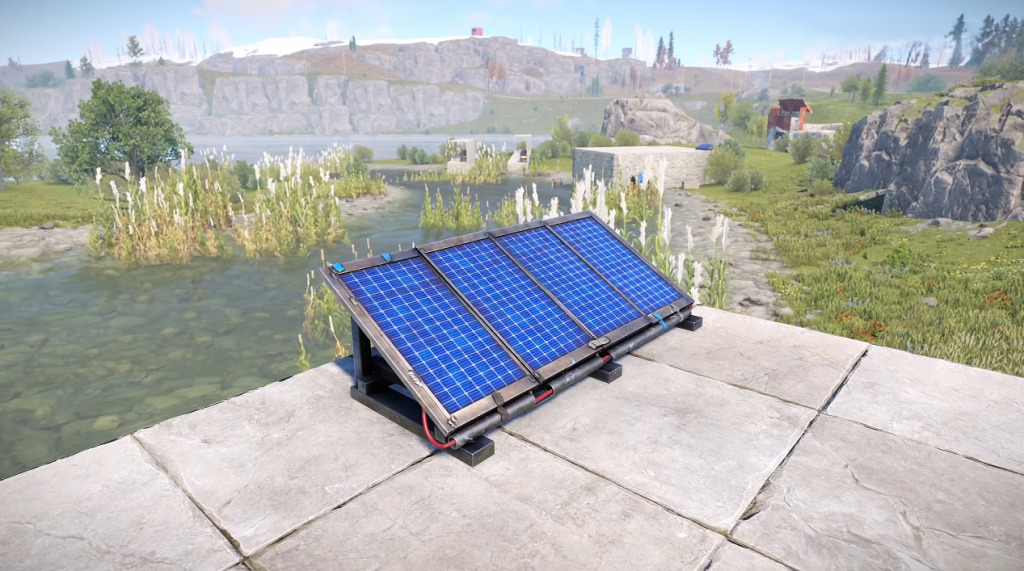
Mastering Genetics
Each crop possesses six genetic slots, affecting growth rate, yield, hardiness, water consumption, and general performance. Understanding these traits is paramount to creating a thriving, high-yield farm:
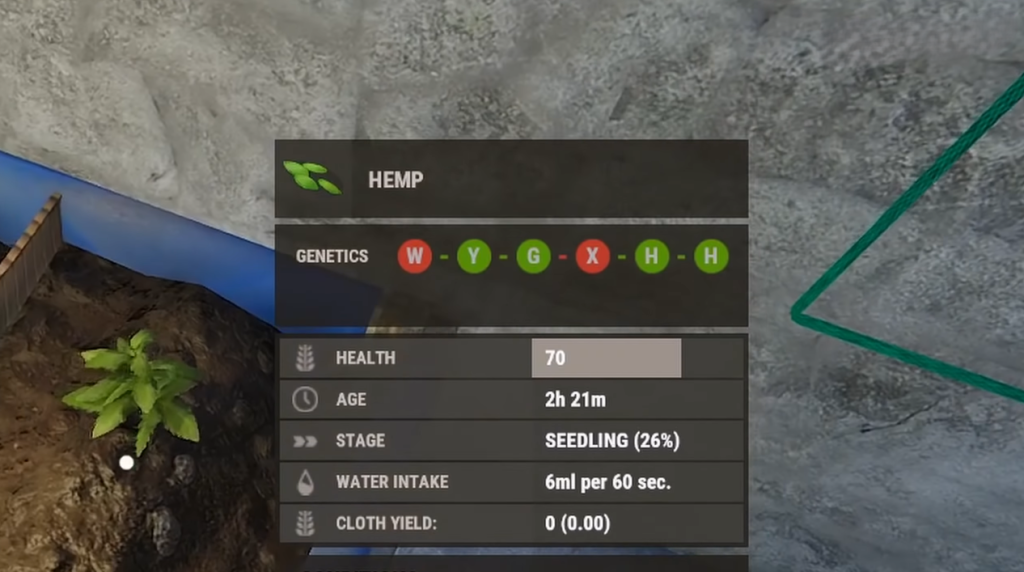
Growth Rate (G)
Indicates how rapidly the plant progresses through each growth stage.
Yield (Y)
Determines the quantity of harvestable items produced.
Hardiness (H)
Impacts resilience against harsh weather conditions and nutritional value upon consumption.
Water Consumption (W)
Increases or decreases the plant’s water needs.
Null Slot (X)
No discernible effect on plant performance.
Crossbreeding for Success
Crossbreeding enables players to modify undesirable genetic traits by planting “donor” seeds near target crops. Donor seeds must carry beneficial traits corresponding to the unwanted attribute(s) in the main crop. Red genetic traits typically demand two advantageous traits to override, whereas green traits require only one replacement. Proceed cautiously, as poorly selected donor seeds can negatively affect otherwise promising crops.
When satisfied with your newly acquired genetic combinations, clone desirable specimens for future propagation or breeding purposes. Alternatively, arrange crops in planter corners or edges, surrounding them with unrelated species to prevent crossbreeding.
Reaping Rewards: Selling Your Harvest
Successful farms specializing in hemp or corn can sell surplus yields to traders at the Bandit Camp. Obtain 10 scrap for every 80 units of cloth or 15 corncobs, providing a lucrative passive income stream. Simply multiply your yield quantities by eight to calculate potential earnings.
Conclusion
By following this extensive guide, aspiring farmers can establish flourishing agricultural operations, complete with state-of-the-art equipment and carefully managed genetics. Embrace sustainability, efficiency, and profitability as you cultivate your virtual garden paradise. Happy farming.
If you enjoy the Rust Farming Guide then you’ll love elevating your gameplay with Ultahost’s Gaming hosting. Experience seamless hosting for your favorite games and elevate your gaming experience with reliable and high-performance servers. Stay tuned for more survival tips and tricks, and keep on surviving.
FAQ
What tools do you need for farming in Rust?
Use a hatchet, Research Table, and Bed.
Which crops are best to farm in Rust?
Try potatoes, corn, berries, hemp, and pumpkins.
How can you protect your Rust farm?
Fortify with walls, traps, or hide crops.
How long until crops grow in Rust?
Refer to crop descriptions for exact times.
Why is farming important in Rust?
Secures food, creates tradable goods, builds communities.





